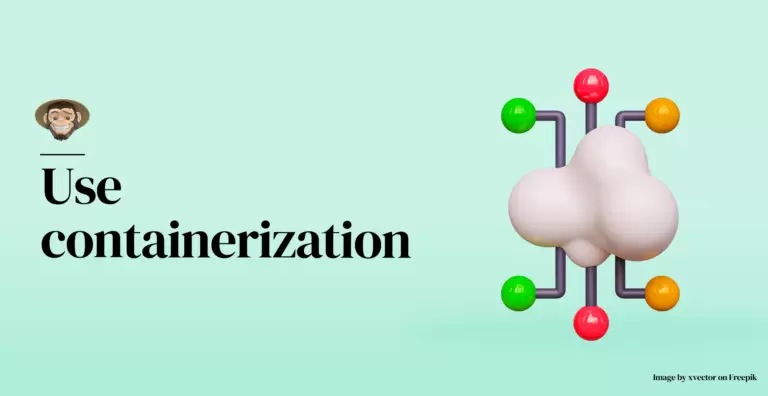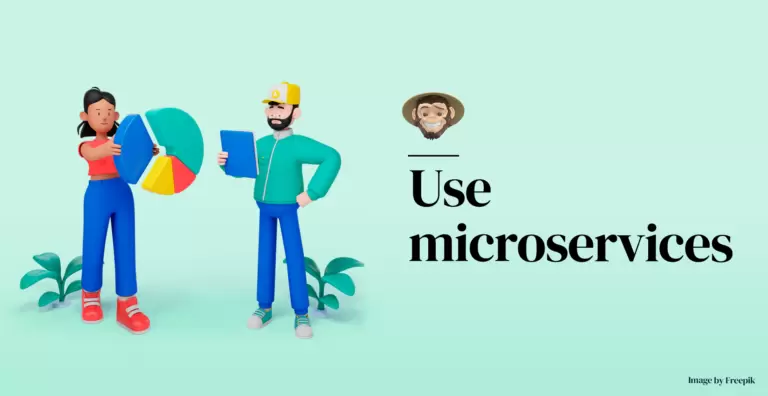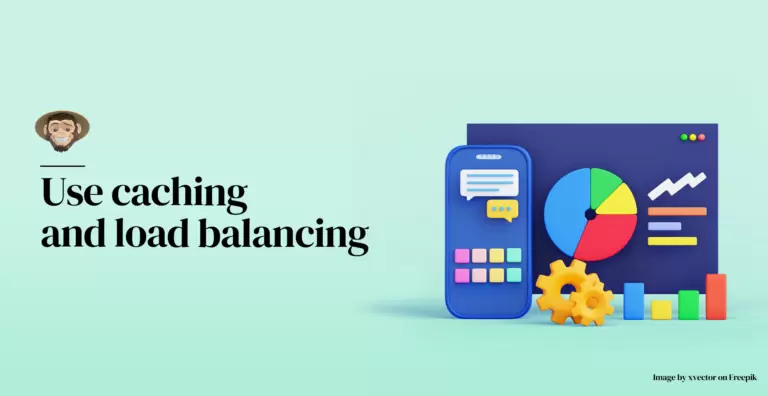For a project to be successful and durable, it must be able to seamlessly grow and evolve to remain competitive and meet users’ expectations, even as they change.
Do you still play Snake on your Nokia 6110? Or do you miss messaging your friends on ICQ? While these old-time applications bring a wave of nostalgia, chances are they wouldn’t function well or meet your needs today. That’s because, thanks, in part, to the advent of modern technologies, faster smartphones, and more capable mobile networks, among others, the needs and expectations of customers are evolving at neck-breaking speeds. What worked five years ago has become obsolete and useless now. We are also becoming more demanding in what IT-based can do for us, and if an application isn’t somewhat tailored and user-specific, not to mention fast and innovative, it quickly goes to the trash. As a result, market trends are changing at an unprecedented rate, making it necessary for app developers and businesses to keep up with these changing needs and adapt their products accordingly to avoid oblivion. But how can we accomplish that without building our products from scratch? By creating a scalable and sustainable app architecture.
Building a scalable and sustainable backend is crucial for creating successful projects and applications that can not only meet the evolving needs of your users over time but also do it seamlessly and without any time or monetary strains on your company, team, and clients. That’s why we, as an experienced app development company, want to explore some of the main ways of building a scalable and sustainable backend to help you create a high-quality application that can grow with the needs of your users both now and in the future. Let’s dive in!

What is scalability and why is it important?
Scalability is a system or application’s ability to be elastic enough to effectively handle any increase in the number of users, workload, or demand without compromising or sacrificing its performance and reliability. In other words, a scalable application can seamlessly adapt part of its architecture to accommodate changes and handle growth without breaking down, requiring unnecessary programming or tweaking, or becoming inefficient. Adversely, an application that is not scalable is prone to experience performance issues or crashes when its workload increases, which negatively impacts the user experience.
In today’s world, scalability is the only way app developers can effectively meet our users’ increasing expectations for lightning-fast load times, high-quality graphics, 24/7 availability, unparalleled performance, and zero downtime. However, suppose your application fails to work correctly under different conditions or can’t handle increases in the number of users and workload, for instance. In that case, it will inevitably be defeated by more capable, scalable apps that offer a better user experience and can stand the test of time. Hence, the importance of building a scalable and sustainable app architecture.
There are two main types of app scaling:
Vertical scaling: Vertical scaling, also known as scaling up, allows you to add more CPU, RAM, storage, or other hardware resources to a single server to help it meet any growing demands or spikes in usage. It helps your application improve its performance and capacity and is often a good option for small to medium-sized applications that face increasing traffic demands often. Still, it’s worth noting that vertical scaling stops being viable at some point and gets expensive fast because it requires purchasing extra hardware or upgrading your existing one.
Horizontal scaling: Horizontal scaling, or scaling out, involves adding extra nodes, virtual machines, containers, or physical servers to your application’s system to help it manage traffic spikes. In other words, scaling out helps you “delegate” workload among several serves instead of dumping the load on one, which can be more complex to implement than scaling up, but works better for more extensive applications with very high traffic loads. It is also often less expensive than vertical scaling.

Choose the right tech stack
First and foremost, you must know that you’re working with the best possible tools and frameworks for your project. As with any app development initiative, choosing the right technology stack is critical to building an application with a scalable and sustainable architecture. Why? For one, because your app’s performance depends mainly on which tools, programming languages, frameworks, and libraries you choose to work with. As you probably already know, performance is one of the most critical factors for your app’s success, sustainability, and scalability. It ensures that your app can handle a high volume of requests without compromising speed or stability. So, it’s paramount you select technologies that can handle high traffic volumes, a language with excellent runtime performance, and frameworks and libraries that support your application’s functionality and are affordable and easy to maintain and update.
Secondly, your choice of frameworks and tools could significantly impact your app’s ability to grow and remain flexible regardless of any changes you need to implement to meet user demands. Your tech stack has to allow you to seamlessly integrate new features or upgrade your application when required without compromising its stability. For instance, frameworks like Django and Node.Js are great options for building scalable applications that perform optimally under changing conditions. Python is easy to learn and fantastic for building scalable applications that need compatibility with AI-powered technologies, while Java is excellent for cross-platform applications with high-security levels. So, regardless of which elements make up your tech stack, the success of your application and the scalability and sustainability of its architecture largely depends on how well you choose them and how efficient they are at supporting your app’s security, performance, flexibility, and growth.

Put scalability at the forefront from the start
In app development, you must always think big or go home from the get-go. That’s right; if you don’t plan for growth and consider scalability when designing your app’s architecture, you’re doomed to fail. So, before you start working on any scalability features and just as you go through a planning and research phase before setting the scope of your project, you need to build a feasible plan that outlines your goals and how to measure them to ensure that your application can handle growth and change without compromising performance, stability, or user experience. Defining your app’s scalability goals and requirements from the beginning of the app development process involves identifying the expected number of initial users and future users your app will need to support, current and anticipated data traffic, and initial features in relation to potential features that your app will handle and may need on the long run and in different scenarios of growth.
Determining this and other crucial information prior to starting the development process will not only help you select the most appropriate tech stack, architectural requirements, and infrastructure needs but also assess and predict future demands and anticipate them so you can be prepared to tackle potential changes in features and requirements and stop them from taking you by surprise. As a result, you can safely select your app’s most suitable architecture, choose a cloud-based platform that can scale quickly, such as or (more on this later), and define scalability requirements so your application can meet any changes without sacrificing performance or efficiency.

Use containerization
Containerization is an essential aspect of building a scalable and sustainable app architecture. It is the process of packaging or bundling an application and its code, components, libraries, and other dependencies into a lightweight, single, standalone, virtual portable container. This container is also executable and can run consistently across different environments, making it perfect for providing a consistent and reproducible environment in that you can quickly move between a physical machine and a virtual machine (VM). It can also be executed across various platforms and infrastructures, such as on-premises data centers or public clouds. Containers are also usually isolated and self-contained and hold all the elements your application needs to run, including the frameworks, runtime, code, system tools, libraries, and settings, to name a few.
By using containerization, you can:
Reduce the risk of bugs, errors, discrepancies, and other incompatibilities that can cause performance, usage, and stability issues.
Improve portability and move your application between different platforms and infrastructures without any geographical or technological limitations. As a result, you can scale your application up or down across different environments without having to modify the code or configurations, which helps you create new updates instantly without any downtime and ensures that your application can handle fluctuations in traffic or workloads seamlessly.
Deploy faster thanks to containers’ consistent and reproducible environment, which can be easily tested and deployed. Tools such as Kubernetes, for instance, allow you to automate the deployment and scaling processes of your application.
Improve resource utilization by allowing multiple applications to run on the same server seamlessly, efficiently, and without interfering with each other. As a result, you can optimize the use of your resources by automatically scaling your application up or down based on any changes in demand. This helps you ensure that your application only uses the necessary resources.

Use microservices
To build a scalable and sustainable app architecture, you need to find the best approaches to app development that allow you to modify parts of your product without too much hassle; a microservices app development architecture is an excellent tool to help you accomplish that. Microservices are a newer, more popular, modern, efficient, and “mature” alternative to monolithic architecture. The basic idea behind microservices is to build your applications and their infrastructure using individual services that are encapsulated and function independently. It allows you to break down a monolithic application into smaller, independent services that can be developed, tested, and deployed separately from each other. These individual services, or modules, have separate databases and independent logic and responsibilities but still work together as a sort of dispersed system where the parts maintain constant API communication. In other words, a microservices app works the same way and performs the same functions as a monolithic app, but each of its “parts” works as a standalone service. Hence, the term microservices.
One of the key advantages of the microservices approach is that it allows you to scale each service independently, meaning that you can carry out independent deployments and operate each microservice separately. You can also allocate more resources to services experiencing heavy traffic or workload while scaling down services that are not used as much. As a result, you can update each microservice independently instead of the whole app, which helps you not only scale your app seamlessly but also distribute the load across multiple services, avoiding bottlenecks and improving your app’s performance.
Additionally, a microservices approach allows you to write each service in a different language, choose the best tech stack for each module instead of being limited to a single technology for the entire app, and build once and then scale as you add more functions and features without compromising the system’s compatibility. Microservices can also make it easier for you to test and debug your application because, since each service is independent, you can test each of them separately and swiftly identify and resolve issues.

Use caching and load balancing
Caching and load balancing are two essential processes that can significantly help you to build a scalable and sustainable app architecture. Here’s a brief overview of how each work:
Caching: Caching is the method of storing copies of all frequently accessed data in a cache or temporary storage location so that all subsequent requests for that same data set can be served from the cache instead of from the original data source. As a result, data can be retrieved faster, and any workload increases don’t compromise your application’s performance on the original data source. Some types of caching include in-memory caching, distributed caching, and content delivery network (CDN) caching.
Load balancing: Load balancing is the process of evenly distributing network traffic across multiple servers. It can help prevent single servers from overloading with requests, significantly slowing down your application’s response times or leading to downtime and even server failures. Load balancers carry out said task by relying on algorithms to balance data traffic. And in the event of a server failure, load balancers can help you improve your application’s resilience, speed, and availability by automatically redirecting data traffic to the working servers.
Together, caching and load balancing are essential to help you build a scalable and sustainable app architecture. First, because they can significantly help reduce server workload and optimize the use of available resources, making your application more efficient at handling high data traffic and more resilient to server failures. Second, because they allow you to add additional servers quickly and efficiently if needed, which can improve the scalability of your application and help it seamlessly handle sudden spikes in user traffic without affecting its performance. And lastly, these two techniques have proven to be highly effective when used in conjunction with other app architecture sustainability and scalability strategies we’ve discussed in this article, such as microservices, containerization, and cloud computing.

Final thoughts
Building a scalable and sustainable app architecture isn’t a luxury; it is critical to ensure that you’re delivering applications that can handle increasing traffic and seamlessly grow over time. So, whether you’re a seasoned app developer or just starting out, by using the right tech stack, designing for scalability from the start, and using tools such as containerizing, microservices, and caching and load balancing, you can quickly build an app architecture that evolves as usage increases and allows you to maintain and update it over time, which is invaluable for providing a reliable and enjoyable user experience both now and in the future.
Let us know if you have any questions or concerns or if you want us to make your scalable app idea a reality!
